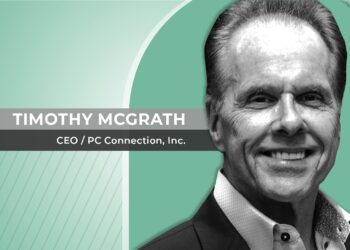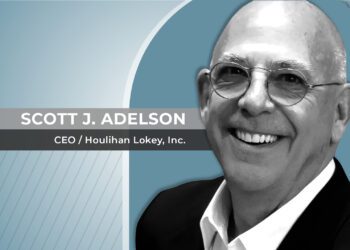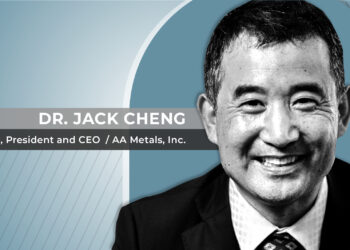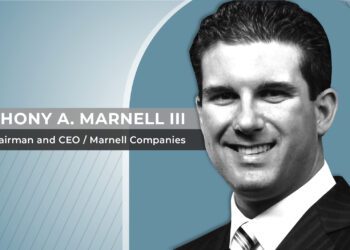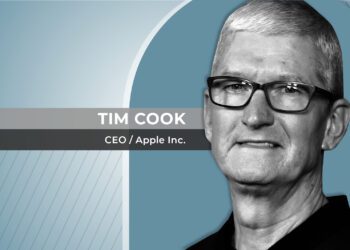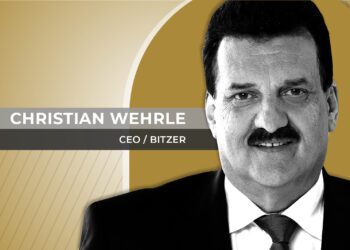Newly appointed president and CEO of LS Energy Solutions, Steve Fludder believes leadership, competitiveness, and innovation will help the Charlotte-based energy storage pioneer become one of the market leaders in the industry.
WITH 30 YEARS’ Experience in the energy sector, Steve Fludder believes that far from being a hindrance, competition is essential to a company striving to be the best in a rapidly evolving and innovation-fueled space such as the energy storage business, pushing rival companies to outdo each other in the vital provision of energy and high quality service to customers. LS Energy Solutions, of which former GE executive Fludder was appointed president and CEO in October 2020, is such a company, aiming to expand beyond its beginnings in Charlotte, North Carolina, and rise to the top of the energy storage market.
“Before I say how we differentiate versus our competitors, let me say that together with our competitors we are transforming the way electricity is produced and consumed,” Fludder told CEO Magazine in an exclusive interview. “We are really creating a new foundation for the electric power system. But I want to emphasize that while we compete with each other to win business, competition forces all of us to innovate more. As a result, we all get better, and that’s ultimately beneficial to the industry and to society as a whole.”
LS Energy Solutions, formerly known as the Energy Grid Tie Division of Parker Hannifin, is an energy storage pioneer based in Charlotte, North Carolina. The company was acquired by LS ELECTRIC in 2018, and is now part of the $25 billion-strong LS Group. Both LS Energy Solutions and LS ELECTRIC have extensive experience in energy storage and related technologies with a global energy storage installed base of over 900 megawatts. LS Energy Solutions is currently boosting its presence in the Boston area where Fludder is tapping into the vast array of tech and engineering talent on offer.
Fludder most recently was CEO of NEC Energy Solutions, an energy storage integrator similar to LS Energy Solutions. Under his leadership that business grew tenfold in the last 3 years, a testament to the rapid growth of the industry. That said, the continuing challenge is not one that he takes lightly. “Energy storage is the foundation of the new electric power system,” he explained. “It used to be wires and power plants with energy stored in the fuel. Now the fuel is the sun, and we convert that fuel to electricity directly with solar panels and indirectly from wind via wind turbines. But the sunshine and the wind are intermittent so we need to change the way we store energy from the hydrocarbon fuel outside the grid to batteries inside the grid.”
Fludder described LS Energy Solutions as a convenient and competitive one-stop shop for energy storage; from energy storage inverters and related components to complete integrated energy storage systems which include after-market services support. The company’s leading products include a wide range of applications both in front and behind the electricity meter with multiple different battery and storage technologies. LS Energy Solutions has a long history in engineering energy storage systems, supported by an advanced global manufacturing and testing infrastructure.
“We’ve got some amazing products in the pipeline, we invest significantly in R&D to make energy storage systems better and more cost competitive, and together with our industry peers we’re really creating a new foundation for the electric power system,” Fludder highlighted. “Still, we are talking about a massive transformation which is both challenging and inspirational.”
THE VALUE OF EXPERIENCE
Prior to NEC, Fludder enjoyed a 27 year career at GE, including five years as a Vice President and Corporate Officer. Among his proudest achievements is the fact that he led the company’s environmental business initiative to growto $18 billion under his tenure. In our interview, Fludder cited accountability, market leadership and competitiveness, and leadership of human capital as the three key lessons and values he took from his time at GE and which he is applying at LS.
“At GE we would always set ambitious targets and goals for ourselves but we would only do that with plans in place to actually achieve them,” he said. “We held ourselves accountable to achieve them because the targets were being set with full knowledge of exactly how we were going to meet them.
“Second, we had a firm focus on market leadership and competitiveness. When I joined GE, Jack Welch was CEO and he drove us to be number one or number two in every market we served. That drives a culture of competitiveness which unleashes innovation and it ultimately results in
market leadership.”
“The third GE value that really matters to me is leadership, not just internally but externally as well,” Fludder emphasized. “I am fortunate that GE placed me in a series of demanding leadership roles of increasing responsibility and I really developed as a leader, ultimately becoming an officer of the corporation. I learned leadership in a team construct and for me it’s really a contact sport. Situations of all kinds are rarely crystal clear at the outset so you need to dive in and mix it up with folks, find out what does and doesn’t work, change course along the way, and create clarity and a direction forward so the team can succeed. But this applies externally as well.
“We’re not just a supplier, we’re among a set of diverse stakeholders that make the complex electricity system work. And since we’re fundamentally transforming the way it works, it impacts everyone. We’re changing the status quo of an entire industry and of course it’s an industry comprised of people. Every stakeholder in this industry is facing change: customers, suppliers, utility folks, regulators, consumers, you name it. At GE I learned how valuable it is to engage and collaborate with diverse external stakeholders to bring about leadership of the industry as a whole.”
INNOVATION AS STANDARD
Fludder cited innovation as the key driver of LS Energy Solutions’ ongoing and future success and also stressed its importance to promoting clean energy amid a wider shift in the social responsibility of the energy industry as a whole. “You won’t get far with clean energy without energy storage,” he insisted. “We do a tremendous amount of R&D to make all the components of the system more energy efficient, and this makes them more economical and more sustainable for society at the same time. The more cost effective we can make things through innovation, the more quickly we’re going to accelerate the transition of the electric power system to a cleaner system for the future.”
While LS Energy Solutions’ core expertise and offerings center on power electronics, system design and integration, and advanced software controls, the company collaborates with outside suppliers for standard items such as batteries, mechanical enclosures, thermal management systems, and controls hardware.
“We strategically partner with companies that specialize in subsections of our systems to provide the best possible solution,” Curt Feldman, Director of Sales and Businesses Development, told CEO Magazine. “Through close collaboration with other engineering teams, we can develop and deliver more innovative systems with improved performance and reliability.”
As of this writing, LS Energy Solutions is also expanding its footprint beyond its traditional North Carolina base to the Boston, Massachusetts area where Fludder believes a combination of market opportunities and an impressive array of technical talent from the various education institutions in the area further add to LS Energy Solutions’ leadership in the energy storage market.
“I’m an MIT grad myself and there’s a significant, continuous flow of innovation and startup companies that come out of MIT in the energy space and especially battery technology companies,” he explained. “There are companies in greater Boston developing solid state batteries, lithium metal batteries, next generation “beyond lithium” batteries, and software, as well as data science around how energy storage systems, renewable generators and the grid can function more optimally.”
“There’s just an enormous amount of activity in the Boston area, and it’s not limited to MIT,” Fludder elaborated. “In much the same way that these institutions created the tech community that used to be centered in Boston and later moved to Silicon Valley, the Boston area is a substantial clean energy technology innovation hub and that’s why we need a footprint both in Charlotte, our historic headquarters, as well as in Boston.”
By Anthony Moran


